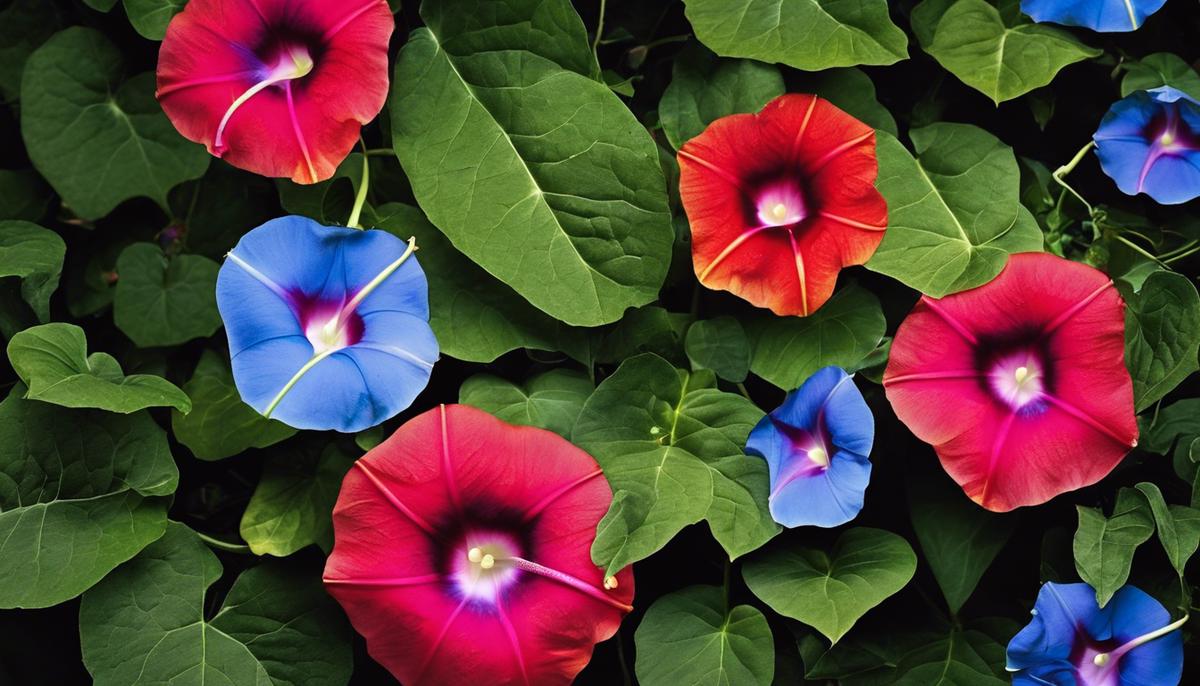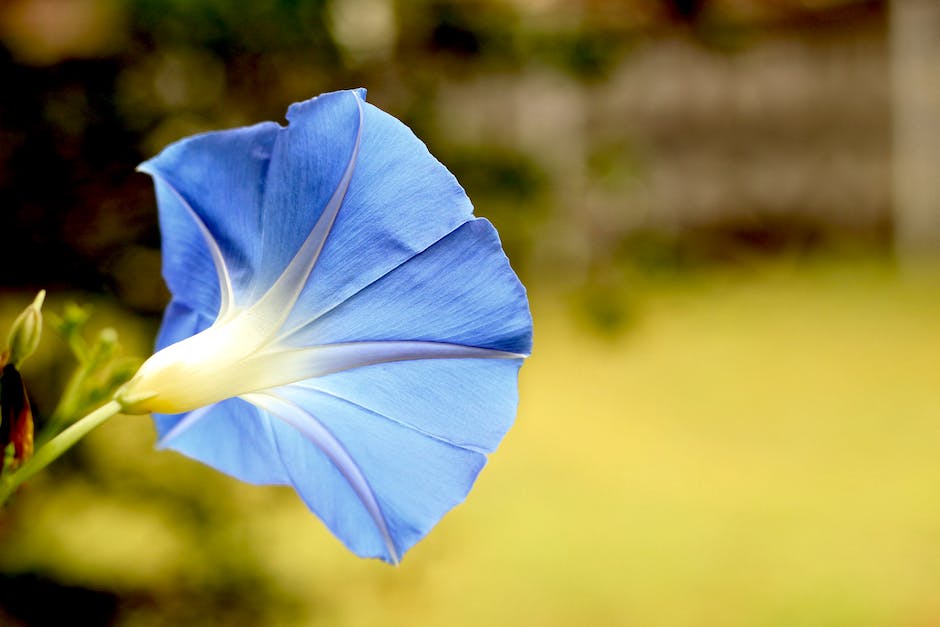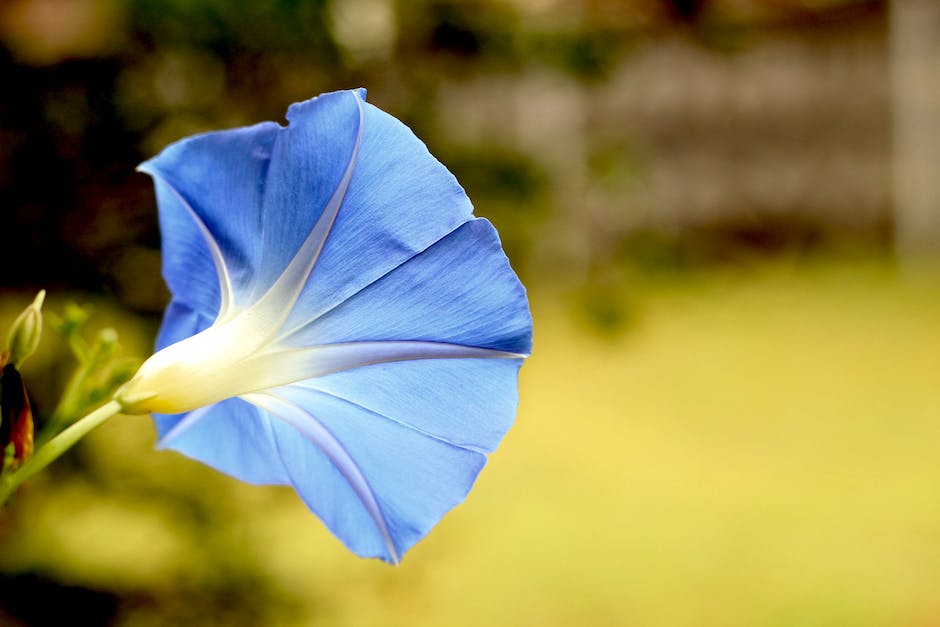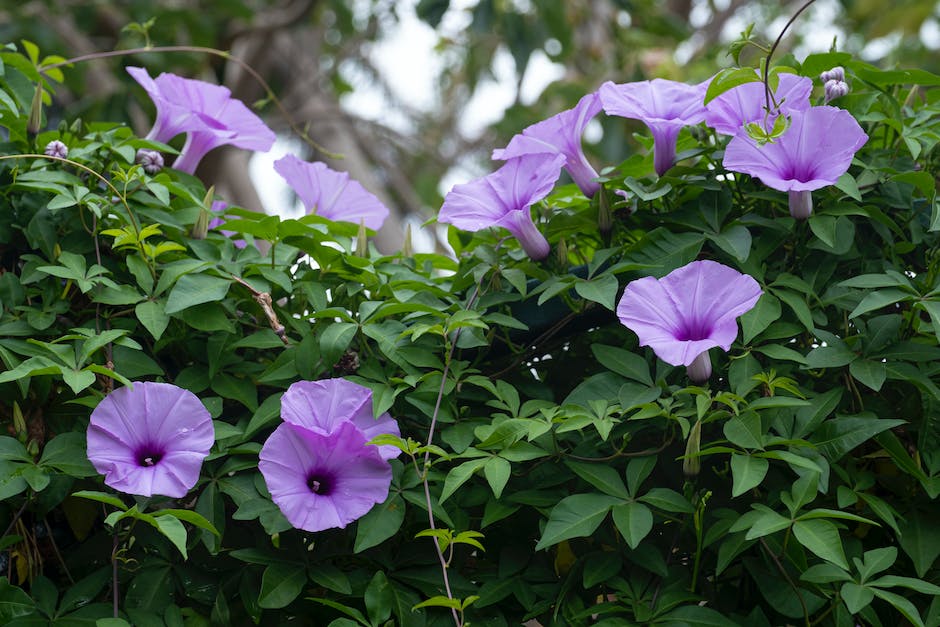Reclaim Your Garden: Eliminate Morning Glory

In every green thumb’s journey, unwanted invaders like the Morning Glory inevitably make an appearance. While their name might sound charming and their flowers may appear dazzling, these plants are known for their insidious habit of overtaking gardens if left unchecked. Knowledge about this botanical adversary, is therefore, crucial to maintain an immaculate garden. In this informative guide, you’ll get to learn how to accurately identify Morning Glory basing on its appearance, growth patterns, and distinguishing traits. Furthermore, you’ll be guided on the various manual removal techniques for getting rid of this plant from your garden. Lastly, we’ll delve into the realm of chemical control, exploring the selection of pesticides that can help you eradicate Morning Glory, along with instructions on their safe and effective application.
Identify Morning Glory
Unravel the Mystery: Spotting Morning Glory Among Similar Plants
Excitement, joy, wonderment – just a handful of emotions a garden aficionado like us would feel when stepping foot into the haven of vibrant flora. Spotting and identifying the wide array of plants is a skill as well as an adventure, with Morning Glory being one of the most intriguing species to single out. Here’s how to detangle the puzzle of distinguishing Morning Glory from similar plants.
A favorite among hobbyists, the Morning Glory family (Convolvulaceae) boasts of a diverse array of perennial and annual plants distinguished by their unique heart-shaped leaves and trumpet-like flowers that dance open to the morning sun and close during the evening, hence the name.
The first sign of adventure begins by observing the leaf shapes. Morning Glory leaves typically have a distinctive cordate (heart-shaped) outline, although some species showcase a more oval form. The leaves grow alternatively along the stem, positioning themselves in a pattern that optimally captures sunlight. Conversely, similar plants like bindweed possess arrow-shaped or broadly lanceolate leaves. The importance of this small detail cannot be emphasized enough for the distinction.
The next clue lies within the vibrant Morning Glory flowers. A spectacle to behold, these brilliant blooms are large and trumpet-shaped, often boasting hues from all corners of the color spectrum. Predominantly, they dazzle in blues, purples, and pinks, emanating a certain charm that seems to hum a distinct tune in the morning sun. The distinctive funnel shape is a clear differentiator, as other similar plants often have more petite and less conspicuous blooms.
Another tell-tale sign lies within the plant’s vining nature. Morning Glories are classified as climbing vines, elegantly wrapping themselves around any structuring support, like trellises or fences, in a clockwise manner, exhibiting a captivating swirl. Their stem, in a surprising contrast, is herbaceous and relatively weak in appearance. This habit drastically contrasts with other similar plants, which present more rigid, shrubby growth patterns.
What about the magnificent seed pods? Any plant identifier knows that seed pods offer fantastic clues to the plant’s identity. Morning Glory seed pods are unique, spherical in shape, and contain black or dark brown seeds. Contrastingly, related plants like the bindweed bear small, egg-shaped seed pods that bear angular seeds.
Finally, let’s not forget the convenience of local knowledge. Morning Glory’s habitat can be quite the giveaway. Most varieties thrive in full sun and well-drained soil. Distributed worldwide, they are mainly found in tropical and subtropical regions, adorning gardens, wastelands, and even roadsides with their attractive blooms.
To wrap it up, distinguishing Morning Glory isn’t a laborious audit but rather an enthralling quest, as enthralling as the blooming of the glorious Morning Glory itself. Happy plant hunting!

Methods of Manual Removal
The Rousing Richness of Morning Glory Cultivation
Cultivating the enchanting whirl of Morning Glory isn’t just a pastime—it’s a gateway to botanical discovery that remains open throughout the seasons. The world of gardening holds immense treasures, chief among them, the thrill of nurturing Morning Glory plants from tender sprouting seeds to fully thriving climbers is unmatched.
Embarking on the journey of Morning Glory cultivation, we find that it opens the gates to an exciting world of seed propagation. The fun kicks off when spring is on the brink of knocking. Morning Glory seeds have a hard outer shell, which benefits from a bit of help to start the germination process. A popular method is to gently nick the seed coats with a file or sandpaper, then soak them in warm water overnight. This softens the casing and primes the seeds for sprouting. Infusing these subtle strategies into your green-thumbed antics is part of what makes the process special and rewarding.
Once our green babies start to sprout, they prefer a sunny spot with well-drained soil. As our young sprouts grow into mature plants, their true morning glory-ness becomes evident in their vining nature. They develop stringy tendrils that are capable of latching onto anything around them, a kind of tender botanical handshake. Installing a simple trellis or a string net can provide support for the climbing habits of these delightful plants. Observing these rampant climbers as nature’s acrobats adds yet another layer of charm to the already captivating Morning Glory.
As Morning Glory aficionados, it’s important to understand that while they are vine-like, they are not parasitic. They happily co-exist with any structures or plants, be they fences, posts, or a neighboring shrub. They only seek support but do not rob nutrients or water from their sources of support. This juxtaposition of independence and cooperation within the Morning Glory species is a captivating study of nature’s ingenuity.
The Morning Glory’s world is not just about the plant’s growth habits, vines, and leaves. Their output of captivating blooms is sensational. To keep these flowering wonders happy, all you need is to ensure good sun exposure, as these plants thrive best under full sunlight or partial shade.
Equally essential to cultivating a thriving garden of Morning Glory is the understanding of their affinity for humus-rich, well-draining soils. Fueling your Morning Glories with a light feed of balanced, slow-release fertilizer at the beginning of their growth cycle can enhance their vitality and bloom production significantly.
Morning Glory presents a myriad of colors, from ethereal whites, sunny yellows, purples, reds, and blues. Not only do they brighten up our gardens, but also serve as a beacon for hummingbirds, butterflies, and bees. Observing these delightful visits can illuminate tons about the symbiotic dance between flora and fauna.
Cultivating Morning Glory encapsulates the full spectrum of horticulture, from understanding the technicalities of propagation to caring for mature plants and maximizing their blooms. This joyous journey not only enriches gardens but also augments our connection to nature’s rhythms. It’s an everlasting voyage of discovery, seeing the world through the lens of Morning Glory.

Chemical Control of Morning Glory
Tackling the Beast: Best Practices for Controlling Morning Glory
After diving into details about Morning Glory’s identification and fostering, it’s crucial to address the elephant in the room – the stubbornly vibrant propensity of these fascinating plants to overgrow and become invasive. Addressing this problem efficiently demands comprehensive knowledge about the use of chemicals or pesticides and their effective applications. With an enthusiastic nod to Mother Nature’s tenacity, let’s chart out the best practice course to maintain decorum in your unruly garden landscape.
Morning Glories, much like their cousin bindweed, are particularly resistant to a lot of common herbicides. However, they, too, have their Achilles’ heel. Chemicals like glyphosate and triclopyr have proven to be excellent weapons in our arsenal. Glyphosate, an active ingredient in the popular weed killer ‘RoundUp,’ disrupts critical plant proteins resulting in the plant’s death. Triclopyr, on the other hand, mimics a plant’s natural growth hormone making it grow unnaturally fast, leading to its demise.
To effectively use these chemicals, here’s a swift guide. Glyphosate-based products are best applied when Morning Glories are actively growing, typically in the late spring and early summer. Similarly, products with triclopyr should be applied when the plants are young, and growth is robust, usually in late spring or early fall. With both chemicals, ensure to follow the manufacturer’s instructions closely.
Bear in mind, these are ‘non-selective’ herbicides and can harm or kill other plants they come into contact with. So, meticulous application is crucial. Use a paintbrush or sponge to apply the herbicide only to the Morning Glory leaves. Additionally, consider using when wind conditions are calm to prevent chemical drift.
On the other end of the spectrum are bio-pesticide options. Chondrostereum purpureum, a naturally occurring fungus, has been used with some success in Morning Glory control. As a bio-pesticide, it affects the plant by causing silver leaf disease, which subsequently kills the plant. Like chemical pesticides, it is most effective during periods of robust growth.
And then we have the organic approach. Vinegar is fast emerging as a popular household alternative for weed control. Acetic acid in the vinegar kills the plant leaves efficiently but securing complete eradication requires multiple applications since it does not primarily affect the root system.
Controlling Morning Glories effectively also brings us back to practicing good horticultural habits. Regularly inspect your garden and promptly uproot any rogue Morning Glory seedlings. Consider planting competitive, native species that can crowd out Morning Glory and reduce its impact. Remember, finding the perfect balance works wonders for a flourishing garden!
All in all, it takes a combination of precise chemical use, good timing, regular inspections, and possibly a touch of vinegar to maintain your garden’s equilibrium. Here’s to a well-behaved garden that still captures the Morning Glory’s undeniable charm!

To retain the beauty of your garden and protect your cherished plants, taking action against invasive species such as Morning Glory is an absolute must. Armed with the right knowledge from identifying the plant to understanding removal techniques, you are now equipped to deal with this floral intruder. Aside from physically weeding and uprooting, we’ve also learned about the chemical aspect, how pesticides can bolster your efforts. Nevertheless, the fight against Morning Glory is ongoing, and the key to victory lies in consistent garden monitoring and prompt action. Remember, a healthier garden begins with the proactive efforts of its keeper and a keen eye for intruders.



